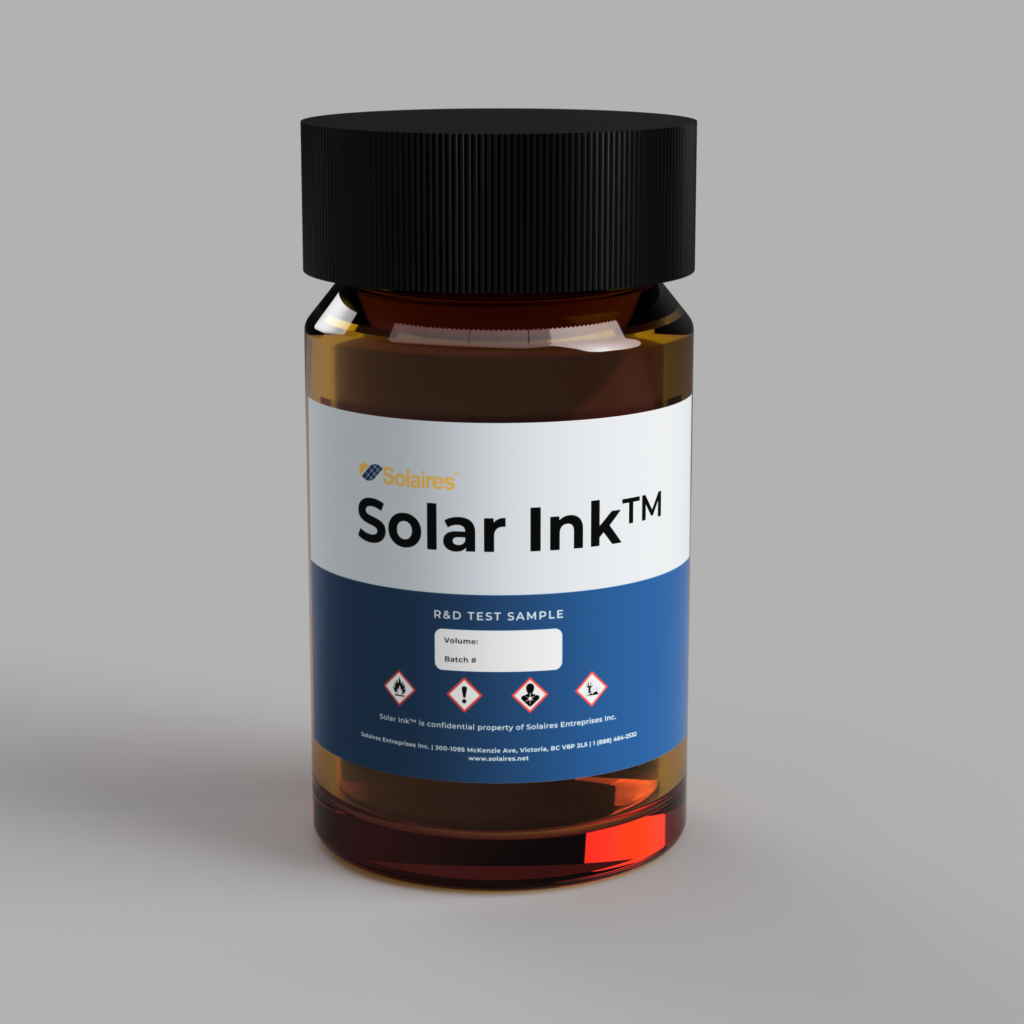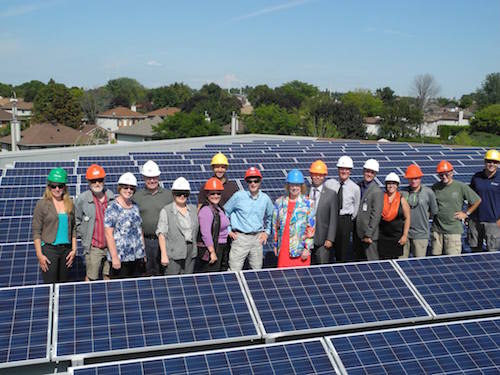Engineering a Cleaner and Greener Solar Economy
Fabian De La Fuente, CEO of Solaires Enterprises, outlines a new development in solar power technology that uses thin perovskite solar cells, beating out traditional photovoltaics when it comes to lifetime emissions, land-use, and practical applications.
A green economy is dependent on a diverse mix of renewable, circular, and environmentally friendly solutions. Where there are rushing rivers, hydroelectric dams are an obvious choice. Where there are consistently heavy winds on an open plain, windmill farms should be exploited. And of course, there are locations where photovoltaics (solar power) should be deployed.
For all the benefits of traditional solar power, it is hard to call it among the cleanest of green energies. Straightaway, we can compare lifetime CO2 emissions from traditional solar to other green and/or renewable energies. The global warming-related cost of energy can often be simplified to a single value: the mass of CO2 and equivalents produced by an energy source (for example, 1 gram of nitrous oxide is equivalent to 300 grams of CO2) divided by the number of kilowatt-hours of electricity generated by the energy source; units of g CO2-eq/kWh.
However, there are severe downsides to the existing solar grid, where traditional photovoltaics are hampered by heavy and rigid solar modules, made from environmentally and financially deficient crystalline silicon. This is where companies like Solaires Enterprises Inc., come in: at the vanguard of clean and green photovoltaic technologies.

CO2 equivalents are produced throughout the lifecycle of any energy source: from the extraction of key minerals to electrical generation, all the way through disposal. For non-combustion energy sources, the vast majority of CO2-eq comes from extraction and manufacturing processes. Not much CO2 is going to be emitted by water rushing through a dam’s turbines, but some CO2 will be released by mixing concrete required to build the dam.
Below is a table which compares the average g CO2-eq / kWh for the most common green energy sources, the American market cost for each energy source, and land-use requirements of the energy sources as further comparison.
| Energy Source | Global Warming Potential (g CO2-eq / kWh) | Projected Land-Use requirements (m2 / MWh) | Cost of Electricity ($ USD / kWh) – Trend |
| Traditional | 43 | 19 (on-ground) | 0.048 – falling |
| Photovoltaics | 3 (rooftop) | ||
| Hydropower | 32 | 33 | 0.046 – stable |
| Nuclear | 13 | 0.3 | 0.029 – falling |
| Wind | 13 | 72* | 0.033 – falling |
| Geothermal | 37 | 7.5* | 0.054 – stable |
Clearly, traditional photovoltaics, based on crystalline silicon, produce a lot of GHGs, and require a lot of land to deploy. The primary source of CO2-eq in photovoltaics comes from the manufacturing process. Photovoltaic-grade silicon is extremely pure, at least 99.999%, which requires hundreds of hours of processing at temperatures exceeding 1000 oC. To make matters worse, over their lifetime, silicon wafers become increasingly polluted and cannot be reused at the end of their life; recycling traditional photovoltaics restarts the entire manufacturing process all over again.
Enter Solaires’ solution: thin-film perovskite solar cells.
Perovskites are a general class of crystalline materials, where different chemicals can be harnessed to alter the characteristics of a perovskite crystal. Perovskites are much better at absorbing sunlight than crystalline silicon. As a result, perovskites are crystallised on a substrate as a very thin film, roughly one-thousandth the thickness of crystalline silicon.

Perovskite precursors are dissolved in a solvent, which is then deposited onto a rigid or flexible substrate in very small amounts using printing techniques common in the electronic and metallic industries. The solvent evaporates as the solution dries, leaving only the very thin perovskite crystal layer which acts as the active solar absorption layer in solar cells to convert sunlight into electricity. This entire process can be carried out near room temperature.
The entire lifecycle of perovskite solar cells, once properly scaled and commercialised, has already been studied. From the extraction of chemicals through the recycling process, we can estimate that the GHG cost of perovskite solar cells will be approximately 11 g CO2-eq/kWh; a 75% reduction from traditional solar cells, and the lowest GHG cost of major green energy sources.6
The global race is on for several companies to properly scale and commercialise perovskite solar solutions. Uncertainty about the final designs, production methods, and availability means we cannot project the cost of electricity from perovskite solar cells, so we cannot directly compare the lifetime generation costs between perovskite and traditional silicon.
We can, however, compare land-use requirements. Large solar farms are an excellent use of open plains and deserts, but widespread deployment takes up a lot of land which may have other uses. Rooftop solar is ubiquitous across the world; homes and businesses readily replace traditional roofing with solar panels, which can supply much of a building’s energy needs (and perhaps send some back into the grid). Rooftop solar has a much lower land-use cost since it piggybacks on land already in use.

The setback for traditional photovoltaics is that they are heavy and rigid. They can only be deployed on roofs which can easily handle the stress of solar panels. This is where thin-film perovskites come in. The thin and lightweight perovskite modules (remember, silicon layers are 1000x thicker than perovskite layers) can be deposited on flexible substrates and mounted on the sides of buildings or the roof of your electric vehicle. Perovskite solar cells are so thin that they do not block sunlight they cannot generate electricity from. These translucent cells can be coated on a glass substrate and integrated into a building’s windows.
Rooftops barely scratch the surface of the mixed-use land that can harness solar energy. In other words, far more solar can fit the 3 m2 / MWh land-use requirement than the 19 m2 / MWh requirement with perovskite solar cells. Crucially, reduced land-use requirements for flexible perovskite solar cells enables their use in micro-grids, replacing non-renewable energy in regions where existing power infrastructure does not reach.
This would be a boon for remote communities who rely on fossil-fuel generators to fulfil their energy needs. We can go even more micro with our micro-grids. While the majority of a region’s electricity will come from larger deployments of modules and panels, flexible perovskite solar cells are an ideal companion for powering and recharging small electronic devices on the go. Devices which use a battery (like IoT devices) can integrate a perovskite solar cell to recharge it.
Given the consequences of traditional photovoltaics, the clean energy sector is in desperate need of an innovative solution to propel the industry into sustainable solutions. Traditional photovoltaics are not a sustainable enough solution, but thin-film perovskite solar cells are.
Thin-film solar cells are lightweight and can be deposited on flexible substrates, lending them to be compatible with many applications where crystalline silicon is ill equipped.
Perovskite solar cells will be among the least GHG intensive major green energy sources, in contrast to silicon. At Solaires, our mission is to make solar energy more accessible through our photovoltaic solutions that address compelling market gaps in solar exploitation. Our thin-film perovskite solar cells can revolutionise the solar energy.
Sources:
- NREL. 2021. “Life Cycle Greenhouse Gas Emissions from Electricity Generation: Update.” NREL Fact Sheet.
- UNECE. 2021. “Carbon Neutrality in the UNECE Region: Integrated Life-cycle Assessment of Electricity Sources.” United Nations Economic Commission for Europe.
- IRENA. 2022. “Renewable Power Generation Costs in 2021.” International Renewable Energy Agency.
- U.S. Global Change Research Program. 2014. “Climate Change Impacts in the United States.” U.S. National Climate Assessment 3.
- NEI. 2022. “Nuclear Costs in Context.” Nuclear Energy Institute.
- Tian, X., S. D. Stranks, and F. You. 2020. “Life cycle energy use and environmental implications of high-performance perovskite tandem solar cells.” Science Advances 6 (31)













